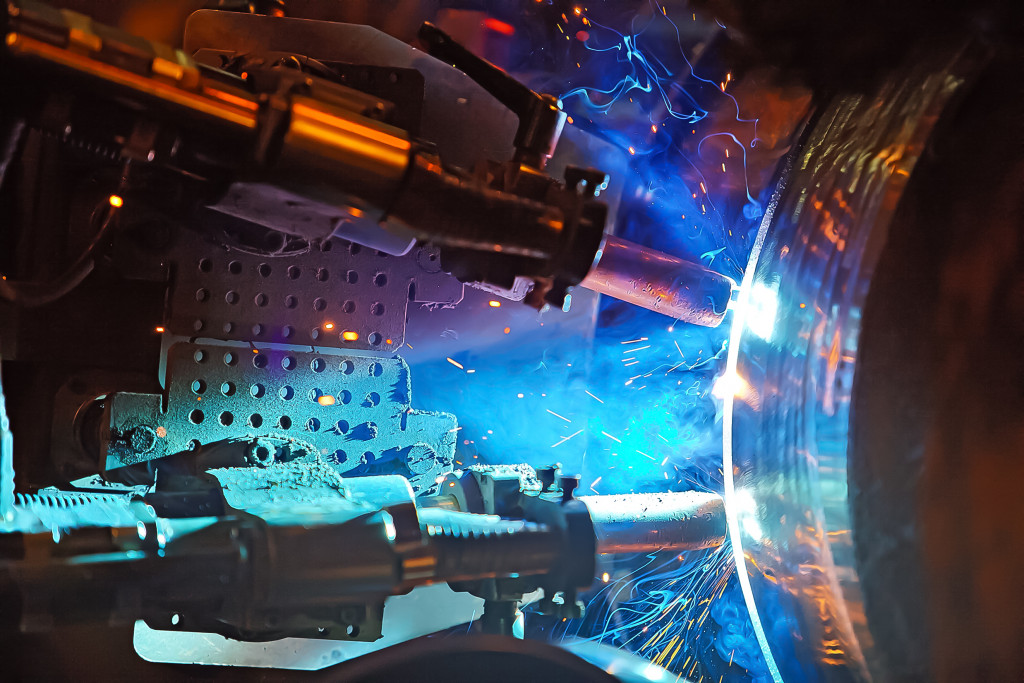- Automation can improve productivity, reduce labor costs, and increase quality control.
- Setting clear automation goals is critical for successful automation implementation.
- Essential supplies such as software, hardware components, connectivity devices, and supporting equipment are needed for automation.
- Safety protocols should be established to protect workers while operating automated systems.
- Monitoring systems can detect malfunctions or abnormalities before they become costly problems.
Automating product production has proven to be highly efficient, cost-effective, and reliable. Automation can significantly boost productivity, reduce labor costs, and increase quality control. It also reduces human error in manufacturing processes, which can help maintain a competitive edge in the marketplace.
The primary benefit of automation is that it speeds up production processes. Automation allows manufacturers to make more products faster and with fewer resources. This is especially beneficial for businesses that require high output levels, such as those involved in mass production. Automation also increases efficiency by eliminating tedious manual tasks and freeing workers to focus on more complex activities.
Automation also helps improve product quality by allowing manufacturers to detect problems faster and implement corrective measures quicker than manual labor alone. Automated systems can track every step of the production process from start to finish, providing real-time data about each product’s status and helping identify potential flaws before they become costly. Additionally, automated programming allows machines to be quickly re-programmed when necessary for product design or process optimization changes.
However, you might be unsure how to apply automation to your production process. Fortunately, there are some key steps you can take to automate product production successfully:
Determine Your Automation Goals
Automation goals are a critical factor in successful production automation. Before beginning implementation, identifying and defining the specific objectives you want to achieve with automation is essential. That way, you can create a plan tailored to your needs and resources to ensure the most efficient outcome.
Achieving a successful product automation process requires careful planning and analysis of the current manufacturing systems, processes, and products to determine which tasks can be automated and what outcomes are desired. Additionally, choosing your automation goals allows for better resource allocation by guiding how much time and money should be invested in each process step.
In addition, setting clear objectives helps you develop realistic expectations for the project’s outcome. Automation may not be able to solve all of your production problems, but it can certainly help reduce costs and improve efficiency if used correctly. Finally, having well-defined goals also keeps everyone on the same page regarding progress and success.
Getting the Essential Supplies

Automation requires a variety of supplies to make it successful. The production process will not run smoothly or effectively without these essential components. Here are some of the most critical supplies needed for automation:
Software and Programming Languages
Software and programming languages are essential for setting up and running automated processes. The software must integrate with existing systems to control and monitor production efficiently without manual intervention. Additionally, programming languages such as Python, Java, and C++ should be familiar so programmers can write automated task scripts.
Hardware Components
Hardware components are needed to build an efficient automation system, including motors, sensors, controllers, actuators, and robotic assemblies. The hardware must be compatible with the software and capable of performing high-speed operations with precision and accuracy. Determining what hardware is required for a given task before purchasing any components is essential. Stainless steel conveyor systems can also automate product movement within the production process.
Connectivity Devices
Reliable connectivity devices are critical for effective communication between machines within an automation system. For example, Wi-Fi-enabled robots can connect over a wireless network to coordinate their movements or receive instructions from a central server. Different types of connection devices include Ethernet cables, Bluetooth modules, RFID tags, NFC chips, and more.
Supporting Equipment
Supporting equipment such as safety guards and protective mats are necessary to ensure workers are not injured while operating automated systems. Other accessories may include tooling fixtures that hold the materials securely in place during machining operations or conveyor systems that transport products between machines quickly and accurately. It is essential to select the right equipment that can meet the requirements of each production process to ensure safety and efficiency at all times.
Create Safety Protocols

As much as automation can help reduce the risk of human injury, organizations should still have safety protocols. That way, workers and robots can work safely alongside one another to ensure maximum production efficiency without putting anyone at risk.
Additionally, safety protocols should be periodically reviewed to adapt to changes in technology or process optimization to prevent any potential harm during production operations. Qualified professionals should regularly maintain automated systems to ensure all components are working correctly and that any worn-out parts are replaced promptly.
Finally, it is essential to have a system in place for monitoring safety during automation operations. For instance, workers may need to periodically check the machines and detect malfunctions or abnormalities before they become costly problems.
Final Thoughts
By following these steps when automating product production processes, you can ensure a successful transition from manual labor to automated systems. Manufacturers can benefit from improved productivity, reduced costs, and higher-quality products with careful planning, implementation, and maintenance of automation equipment. Automation provides an opportunity to gain a competitive edge in the market by achieving better outcomes faster.




